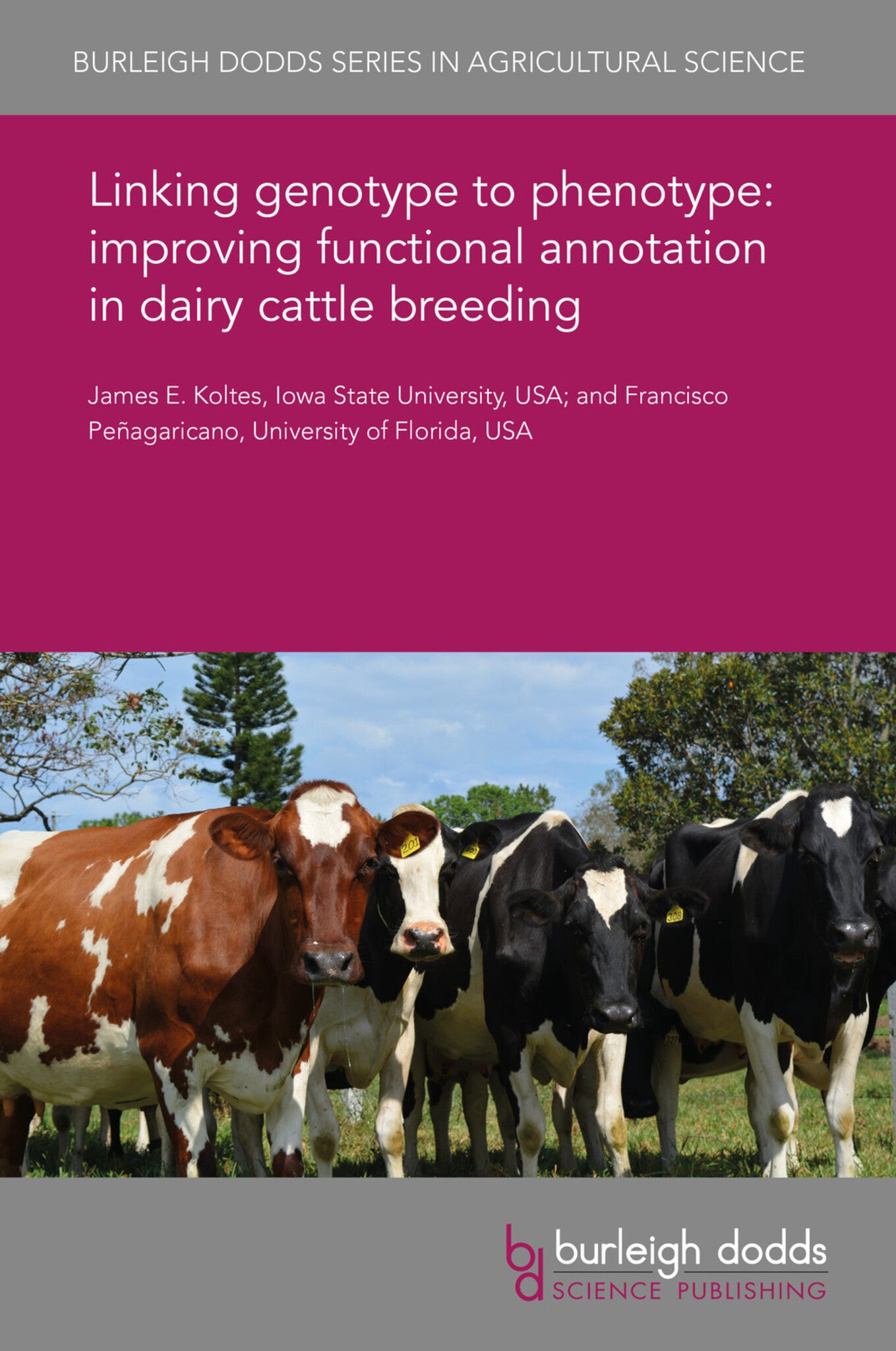We're sorry. An error has occurred
Please cancel or retry.
Linking genotype to phenotype: improving functional annotation in dairy cattle breeding

Some error occured while loading the Quick View. Please close the Quick View and try reloading the page.
Couldn't load pickup availability
- Format:
-
23 December 2019


TECHNOLOGY & ENGINEERING / Agriculture / Sustainable Agriculture, Dairy farming, TECHNOLOGY & ENGINEERING / Agriculture / Animal Husbandry, Sustainable agriculture, Animal husbandry, Animal breeding

1 Introduction 2 How useful can functional annotation be for breeders? 3 Genomic prediction using functional data 4 A vision for linking genotype to phenotype in livestock 5 Why annotating the non-coding regions of the genome is important 6 The role of functional annotation information from comparative biology analyses 7 Building annotation information through deep phenotyping 8 Role of gene editing in functional annotation 9 Conclusion 10 Future trends 11 Where to look for further information 12 References



